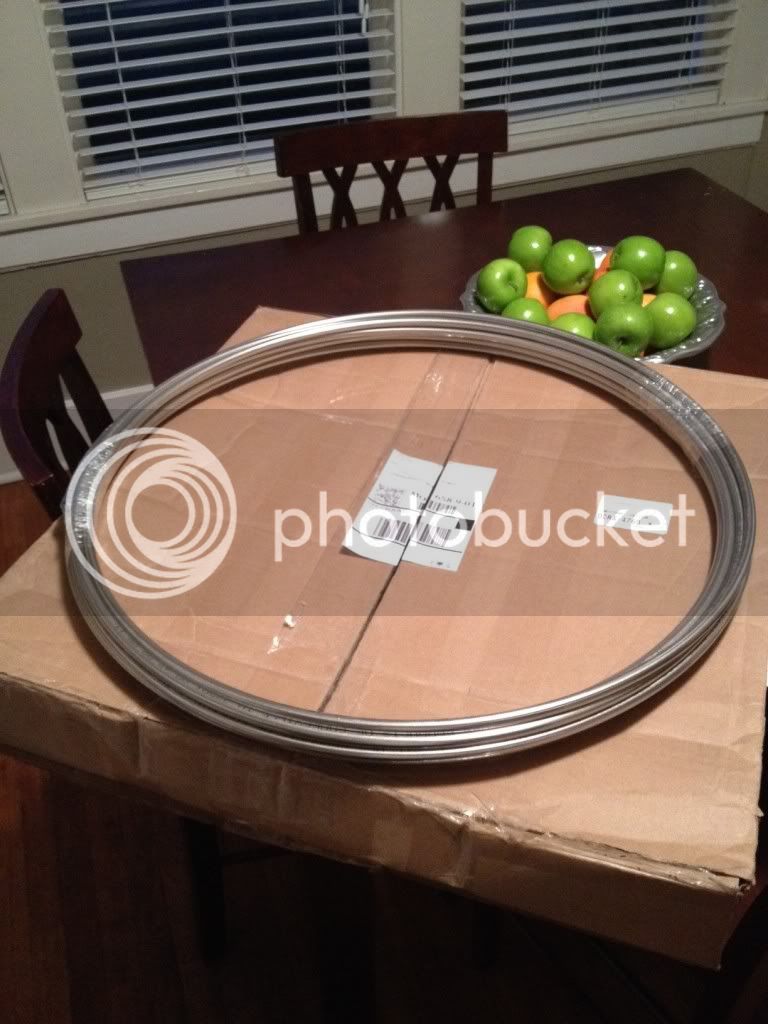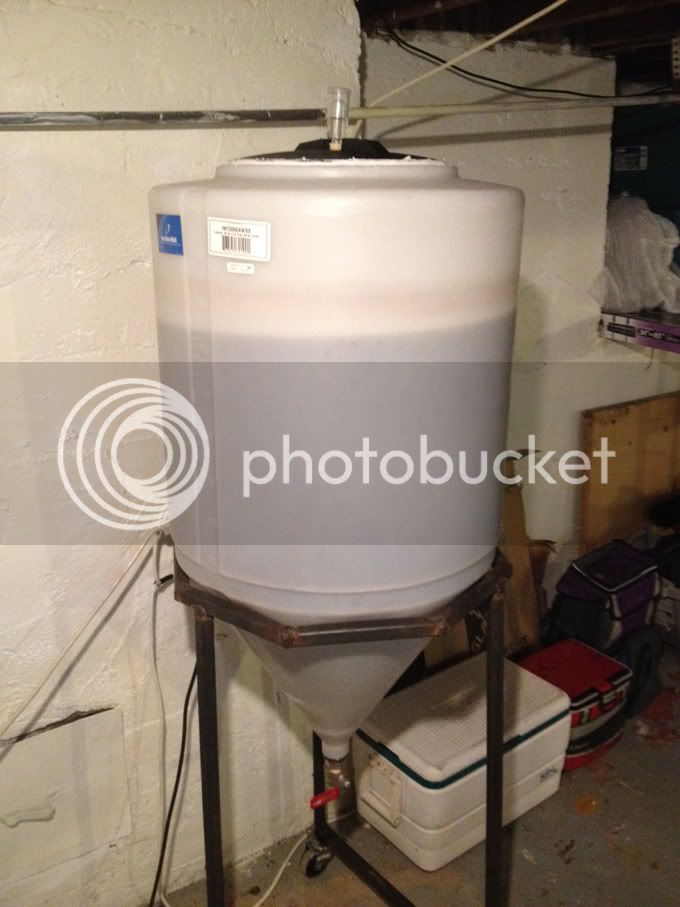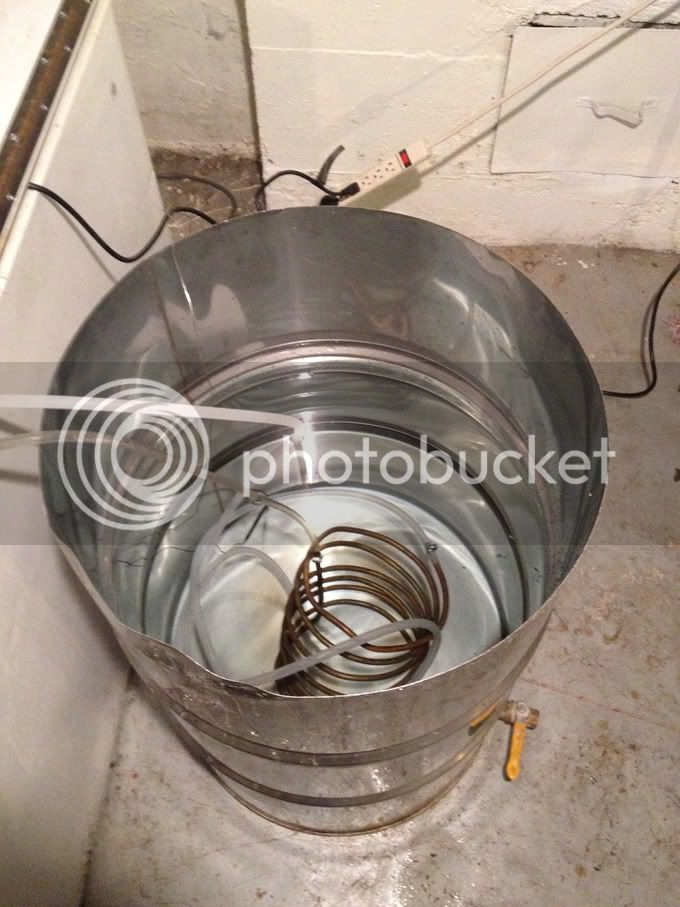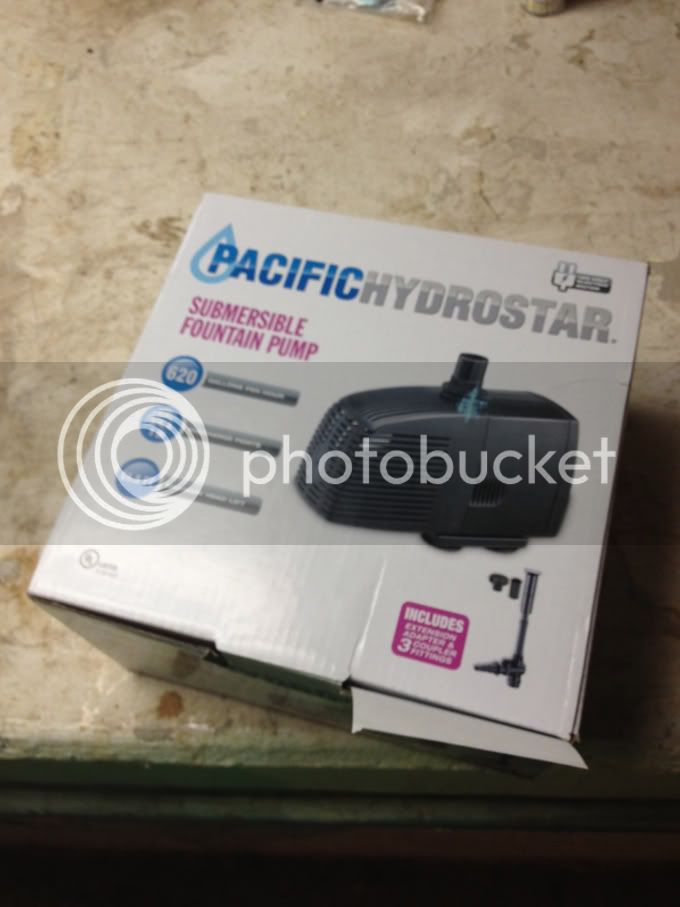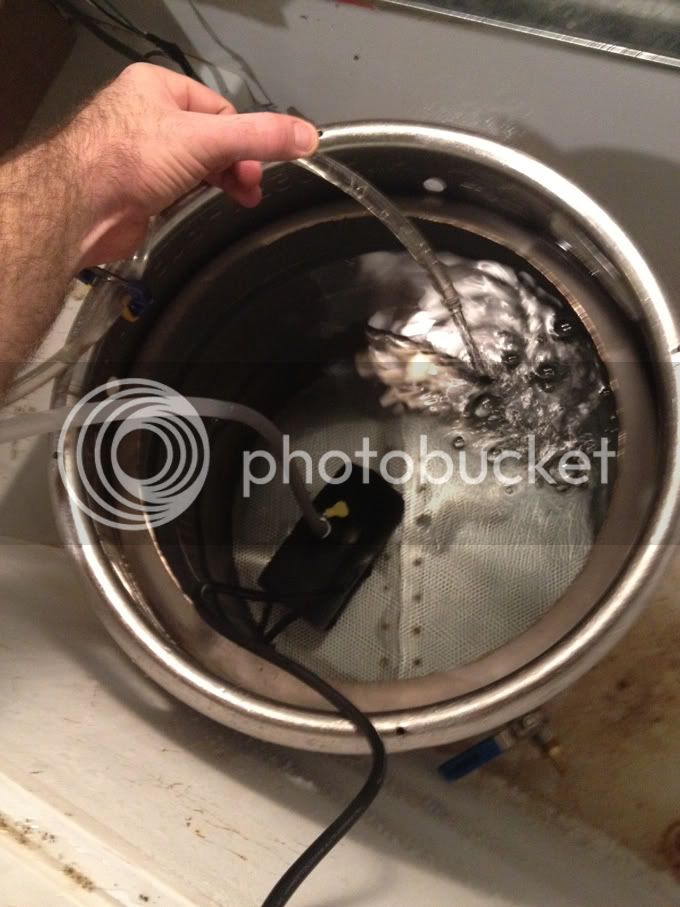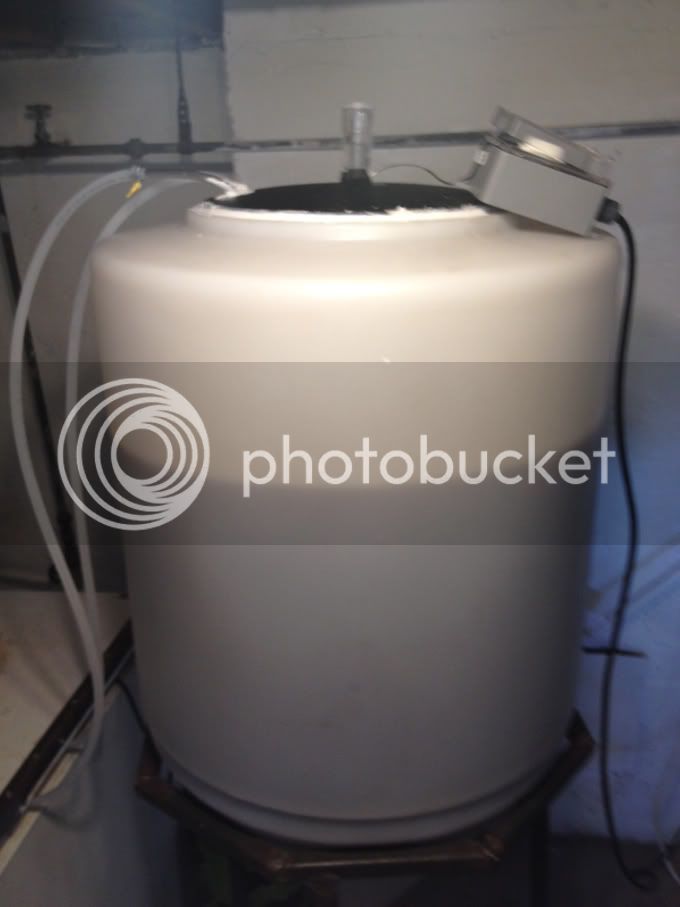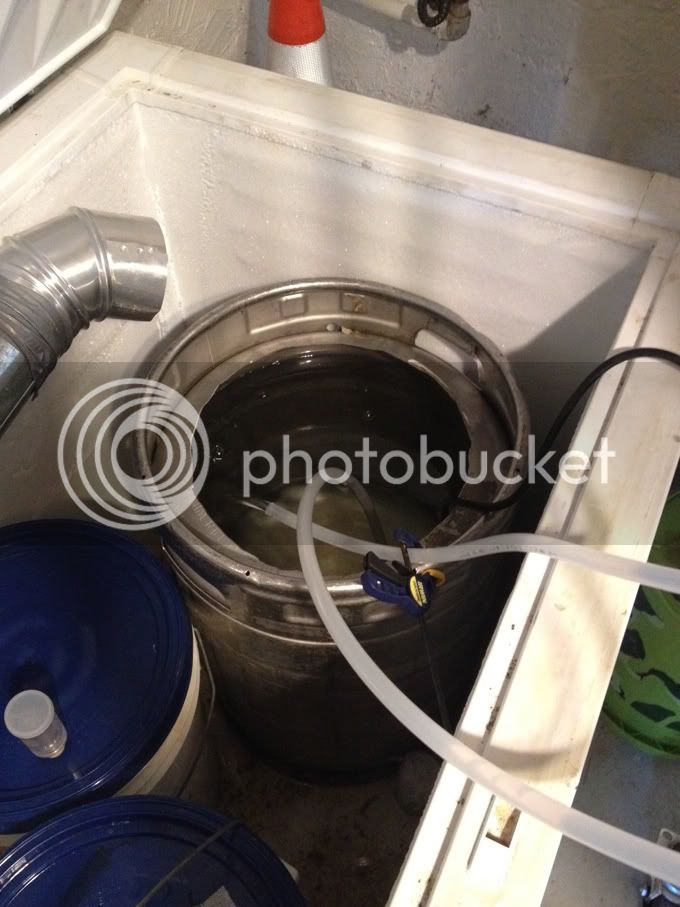Bullka
Active Member
We need some advise on how to lager large batches of beer. We typically make 35-45 gal batches using the plastic fermenter shown in the attached picture. We typically use this fermenter for ales and when we make lagers we put the beer into the 7 gallon buckets and put it in the freezer's shown in the back of the picture, which is becoming a pain in the butt. We are wanting to use our fermenter for lagers as well. We are trying to figure a way to keep the beer around 45-55 degrees. We do not have a refrigerator to wheel our fermenter into and to cool the beer in open space.
The only idea that we have come up with so far is to have a reservoir of cold water in our current lagering freezer and use a pump to run water through a stainless steel coil suspended in the fermenter. The temperature would be regulated by having a probe suspended into the fermenter that would turn the freezer and pump on and off depending on temperature. Has anyone tried a set up like this before or do you think this would work? If anyone has any other ideas we would appreciate the input. Thanks in advance.

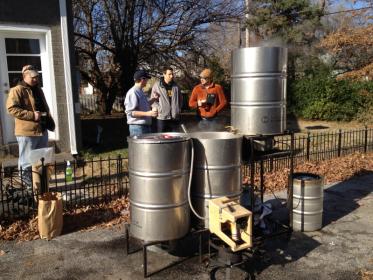
The only idea that we have come up with so far is to have a reservoir of cold water in our current lagering freezer and use a pump to run water through a stainless steel coil suspended in the fermenter. The temperature would be regulated by having a probe suspended into the fermenter that would turn the freezer and pump on and off depending on temperature. Has anyone tried a set up like this before or do you think this would work? If anyone has any other ideas we would appreciate the input. Thanks in advance.




